by Venchito Tampon Jr | Last Updated on July 10, 2023
What is content writing?
Content writing is a form of online writing that aims to convey a message targeted to an online user on one buyer’s stage: viral, discover, consider and customer.
What is content?
Content is anything that adds value to the reader’s life. It could be in a form of text, image, video, audio, product, ideas and messages that can build trust and authority with your readers and customers.
Content marketing is a buzzword. You probably have read hundreds of articles on how to create and write content that can engage readers and potential customers, but at the end of your reading time, you still ask yourself, “How can I apply those content writing tips and strategies I just read?”.
This guide gives you 54 actionable content writing tips you can apply today.
How to Improve Content Writing Skills (53 Actionable Tips)
1. MAXIMIZE CONTENT TIME WITH EVERNOTE
Productivity is an important element in content writing.
The more you can maximize your resources wisely, the more time you can spend on actual content drafting resulting in a better quality of content.
One way to do that is to use Evernote.
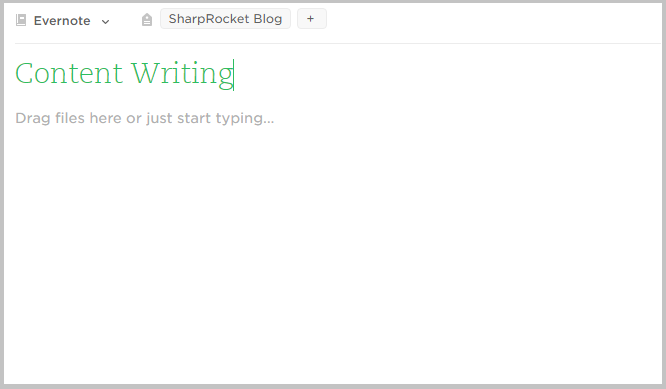
It’s a great tool that you can use to create drafts for your content.
Whether commuting to places or having informal meetings with your other team members, maximizing the tool for effective brainstorming, content outline, and drafting is a better way to maximize time than doing nothing else.
2. FOCUS YOUR TIME WITH TOGGL
Ever wonder how many words you can write every hour on average?
No?
Remember, every task that is worth doing should always be tracked. The same goes for content writing. If you can track how many hours you can write every single hour, you can also easily set goals for a content writing project. This is very helpful if you are a content writer and are getting paid hourly.
One of my favorite productivity tools is Toggl.
It’s free and has a user-friendly interface. Check out the image below – this is how I tracked my hours of outlining, getting relevant references and resources on the web, and writing the actual draft.
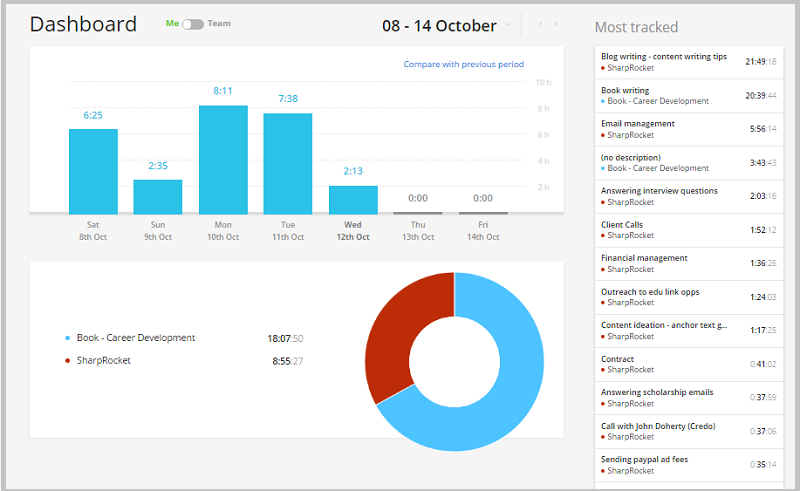
3. CAPTURE INTEREST WITH APP METHOD
Aside from writing headlines, one important skill that every marketer and blogger should be good at is engaging users in the first few sentences of the content.
The introductory part can either set the visitor’s mood to continue reading it as it provides information on what the overall content will bring to the table or get him to leave the page because it doesn’t satisfy his intent.
The APP method, a copywriting method that Brian Dean popularized, makes content easily relatable.
Here’s an example of how Brian Dean implemented this method.
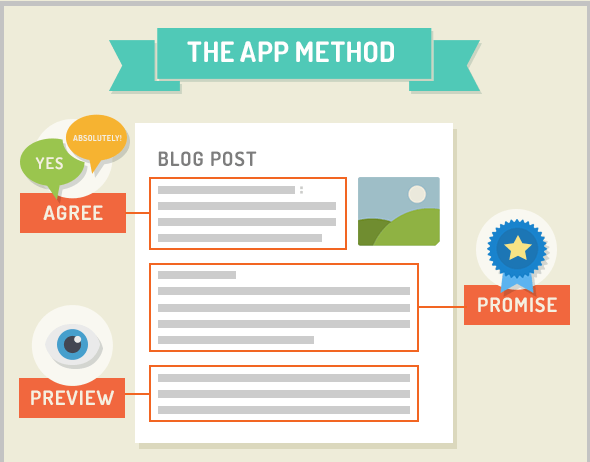
If you are struggling with writing the first paragraph of your content, try the APP method.
4. LEARN FROM COMPETITORS’ TOP PAGES
Ahrefs is web-based link research that tracks a site’s most-performing content regarding link growth and the number of social shares.
It helps you easily grasp which type of content your top competitors heavily promote and receive natural links from relevant sources. Here’s how can you do it.
STEP 1: Make a list of your competitors. If you don’t have any, ask your clients or do a Google search for your main keywords and see what brands pop up on the first page of search results.
Tip: Know if they are direct product/service-oriented or content competitors. The clue is in the keyword you choose if they are commercially based or informational.
STEP 2: Plug it into an Ahrefs tool and look at its top pages – you can click on the “best by link growth” to give you linkable assets that are continuously generating natural backlinks.
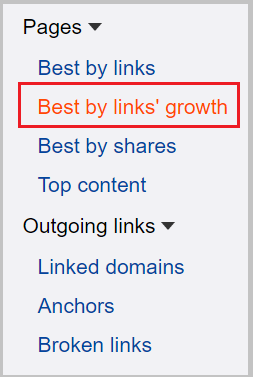
STEP 3: Generate ideas from their top pages. Note sections that can still be explained and discussed on deeper levels.
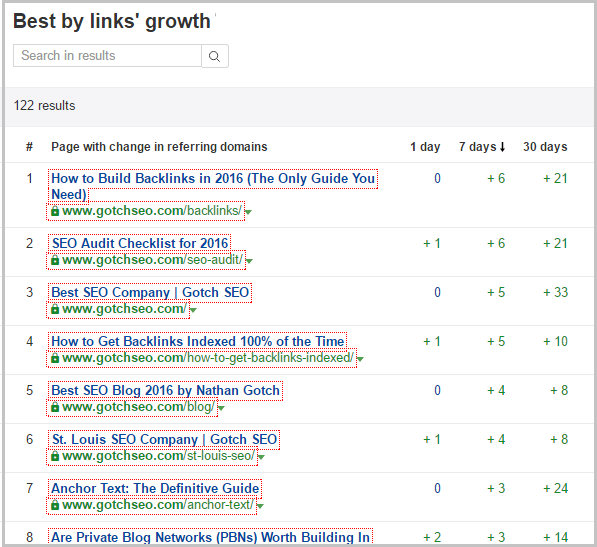
5. LEVERAGE EXPANDED GUEST POST
An expanded guest post is a coined phrase by Brian Dean that can help increase your content’s engagement and potential linking capacity by giving adapted readers a new taste of the information.
How to exactly do it?
STEP 1: Make a list of information in your industry based on the audience of your target guest blog. Provide actionable points as this type of content (how-to’s) is more repeatedly shared and linked to by other content producers.
STEP 2: Expand your points by adding more details – more so with detailed steps. This allows your target readers to apply immediately each point you have discussed.
STEP 3: Repeat this to all your distributed content – e.g. guest posts.
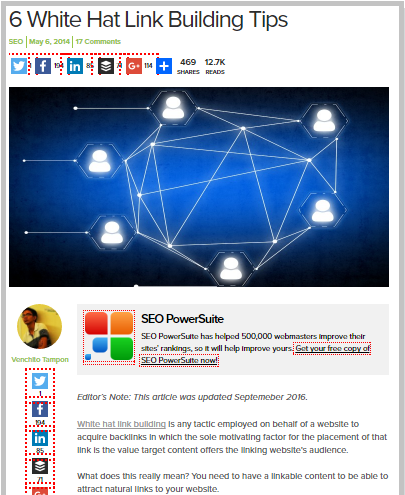
6. KNOW THE FIRST AND BEST RULE
When there are millions of content being published on the web, there is no other way to make your content stand out but to make it better than others.
The question is, how do you do it?
STEP: Type in your target keyword or your topic in Google.
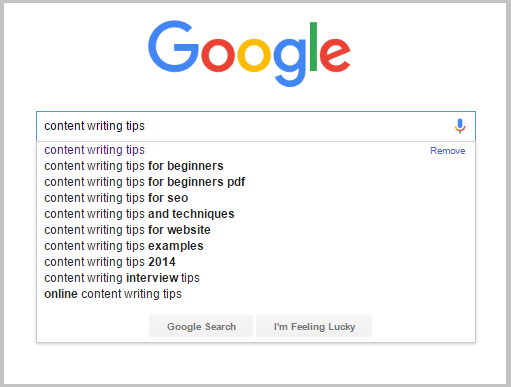
STEP 2: Read the top-ranking pages (if you don’t have much time, you can skim). Find missing points where you or your team can explain much in detail. Note these points and make a list.
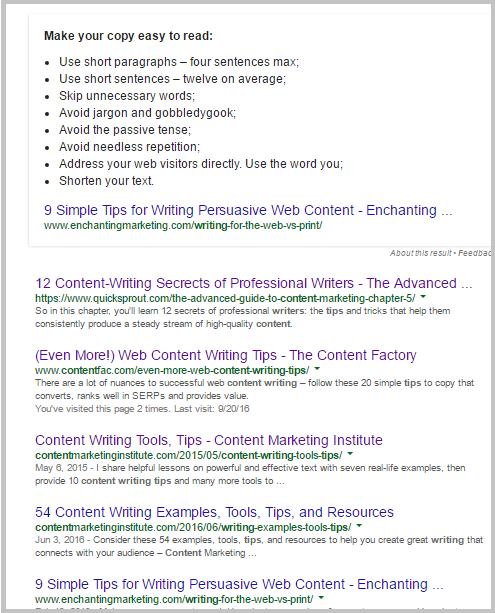
STEP 3: If other blogs don’t overly discuss your topic, i.e. there are only 2 or 3 in the ranking pages specifically covering the topic, that’s a good one you can pursue – make the content better than those 3 content assets or be the first one to comprehensively provide information on one subject if you don’t have any competing pages.
7. FOLLOW INFLUENCERS FOR CONTENT INSPIRATION
To build your content’s credibility, you must ensure your examples are real. If not based on your life stories and experiences, link to bloggers, experts, or influencers with similar references.
Start following these steps:
STEP 1: Create a public or private list of Twitter influencers/experts in your industry. Most of the time, if they are active content creators, they’d share their best secrets, experiences, and examples of their work. These are goldmines if you’re trying to look for case studies and references, EVEN IF you still don’t want to write at that moment.

STEP 2: List the latest content they’ve shared on their blog and their recent valuable Twitter posts – you might want to use them as references in future posts. You can use Notepad, or the best is Evernote, as you can easily sync it whether you’re online or offline.
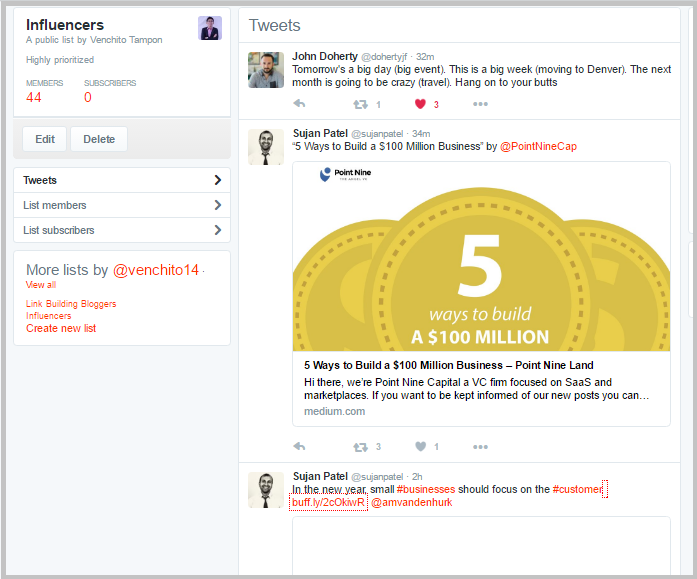
STEP 3: As you write your content, return to your content references list and get what you think would be useful to add to your draft. Now, you don’t have to do Google searches to find useful resources you’ll externally link to your content.
8. GET A PROOFREADER
If you are a blogging newbie, this tip might cost you a few bucks. But if you’ve been blogging for years, one way to make sure you improve the quality of your content – is by having someone look over it (proofread and edit). Since last year, I’ve hired a freelance proofreader to check all grammatical errors in my article, whether they’ll be published on my blog or distributed to others as guest posts.
Here are a few steps to make the most of outsourcing your proofreading task.
STEP 1: Find virtual assistants who have experience with copywriting and editing. Go search in Onlinejobs.ph or Upwork for freelance copywriters, editors, or writers (some have a good background in proofreading too).
Tip: If you don’t have much time, ask your colleagues if they know someone good at editing/proofreading or go to Facebook content marketing groups.
STEP 2: Interview and hire someone you’re comfortable working with. Write an outline as to the tasks and process you wish to implement. For example, in my case, I want my editor only to add changes (still have to accept/reject) – there’s a feature in Word document for this. This can help me see my errors first before making the change so I can avoid them the next time I write the article.
STEP 3: Accept or reject changes. Put your content into your WordPress dashboard and publish it.
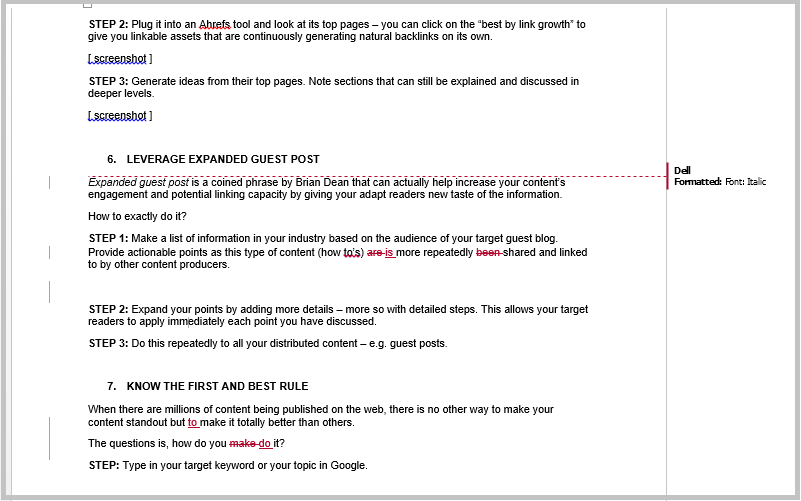
9. WRITE A SERIES TO CREATE EXCITEMENT AND ANTICIPATION
You’ll probably get more new visitors when you see your Google Analytics account than returning ones. You want a higher percentage of returning visitors depending on which traffic sources you’re looking at.
What you can do to achieve that goal is to let your readers anticipate the next content you will publish on the blog. How?
STEP 1: Think of the type of content that will precede your next to-be-published content. It could be sneeze pages (learn more about it here), best of sections (e.g. Crazyegg best of content), or a series of content (one example is this content marketing tutorial of SEO Hacker).

STEP 2: Set the tone of anticipation in your next content by adding a call-to-action at the end of the post. One good example is how they let their readers know about the series and why it is something they should look forward to.
STEP 3: Promote your content series to your email subscribers and social followers.
10. USE TOOLS TO BUILD A HABIT
Distractions can get in the way easily. What we need to develop as content writers is the right focus toward the goal – finishing the writing task within the day.
If you want to be more productive daily, follow these steps:
STEP 1: Install any of these tools to break your habit of procrastination: Focus or Forest. These tools are useful to help you get into your “focus” zone.
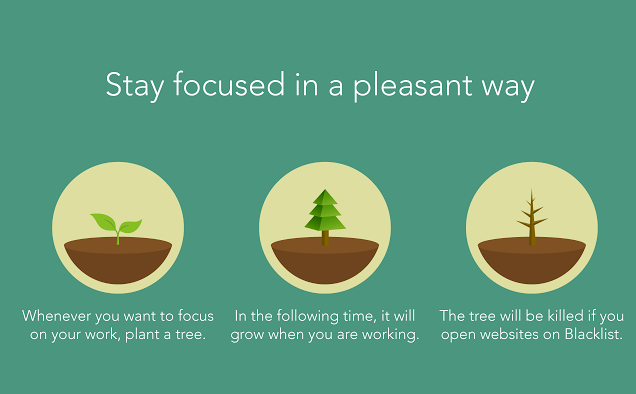
STEP 2: Be accountable for finishing your task by opening up your preferred productivity tool. The web-based product also helps you track how many hours you spend at work, on social media/leisure, etc.
STEP 3: Be determined to finish your tasks with the help of the tool.
11. CREATE CONTENT BASED ON THE BUYER’S INTENT
Success without an objective is useless. You don’t have a metric or KPI to measure your performance – making it easy to produce mediocre content.
Hundreds of businesses, whether startups or big corporations are now investing in content marketing because they’ve seen returns from their investments – particularly with brand building, brand exposure, and lead generation.
How can you create content with a business objective in mind?
STEP 1: Identify your objective as a marketer, whether you are working for an agency, client, or for your own website. Set key performance metrics (learn about this here).
STEP 2: Identify pages you have on your site and match them to the marketing funnel. Know what pages you must create to facilitate your visitors into the buyer’s journey. Sample image from Webris.

STEP 3: Create a spreadsheet that shows what buyer’s intent each target page will be targeted to. You can do your topical research first before doing this.
12. IDENTIFY YOUR AUDIENCE’S PAINS AND PROBLEMS
Informational content will best serve its audience if it solves a particular problem in the industry. If it’s something you think you haven’t implemented yet with your content marketing strategy, you can do it with these tips.
TIP 1: Find industry threads in forums and Q&A sites and look for patterns of problems and pain your content should best serve.
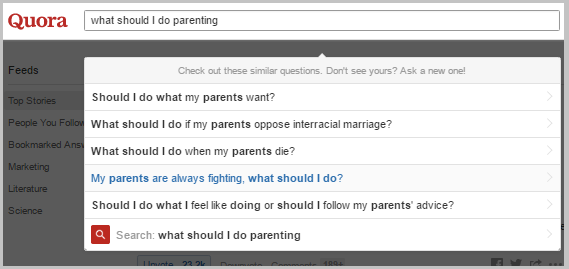
TIP 2: You can also skim through comment sections of top blogs in your niche. Some online readers happen to share their struggles by asking questions to influencers.
TIP 3: Don’t think much about keyword volume. If you target long-tail topics, you’d be surprised to get some long-tail traffic by creating content that answers a specific question.
Tip: Read this guide for reference on optimizing content for the Google answer box.
13. USE WIKIPEDIA TO FIND OLD LINKABLE CONTENT ASSET
Wikipedia pages acquire a lot of editorial links and mention from relevant blogs, making it an evergreen linkable asset when linking inbound links grow over time. Taking advantage of this by determining which Wikipedia pages relevant to your industry are evergreen linkable assets helps you brainstorm great content ideas.
Here is how you can start it out:
STEP 1: Find Wikipedia pages in your industry by using this tool or doing a Google search for site:wikipedia.org [keyword] + “dead link” (or “citation needed”)
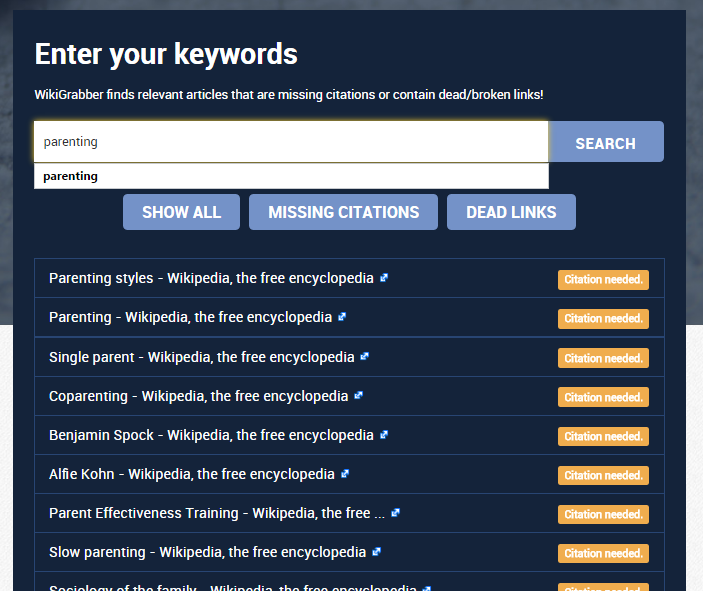
STEP 2: Determine how many referring domains are linking to each Wikipedia page to assess how linkable the topic is (~100 referring domains is a good number).
STEP 3: Create content that covers the topic of the Wikipedia page you choose. Make it as comprehensive as you can, so it’d be easy for you to nudge linking bloggers of that Wikipedia page to mention your similar content in their blog posts.
14. END YOUR CONTENT WITH AMAZING CALLS-TO-ACTION
Some content writers still haven’t utilized the power of calls to action as part of their content creation phase. It’s saddening that people aren’t signing up for an email list or even following a certain Twitter profile because there’s no call-to-action added at the end of the post.
Look at some of the best call-to-actions I’ve seen on other blogs.
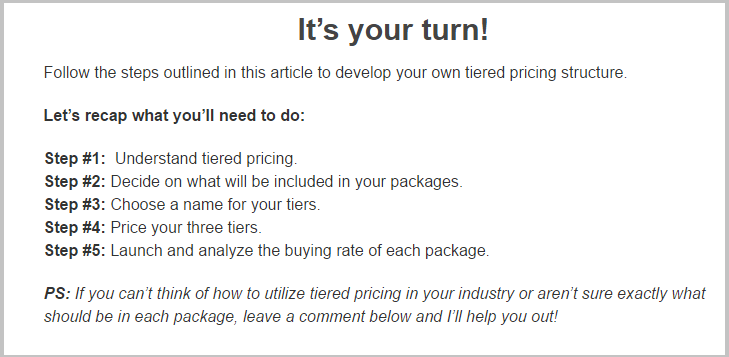
Writing a call-to-action takes only 2 to 5 minutes, so be sure to have it as you write your final draft.
15. STRUCTURE YOUR MOST IMPORTANT CONTENT WITH A YELLOW BOX
Design and user experience make a lot of difference in engaging blog readers. When they land on the page, they don’t just read your whole blog post but look at other elements that’ll make it easy for them to understand the topic. Elements like images, videos, presentations, and custom boxes give more emphasis to some of the most important parts of the content.
I’ve first seen the use of “yellow box” in Brian Dean’s post. No big thing here, but it makes it interesting that it allows specific content to be emphasized within the whole content, especially if you’re trying to write a long-form type (~2500 words).
STEP 1: You can add this code to your theme’s “functions.php” file (or “custom_functions.php”on Thesis) to create a yellow box.
function make_yellowbox($atts, $content = null) {
return ‘<p style=”background: none repeat scroll 0 0 #ff9; clear: both; margin-bottom: 18px; overflow: hidden; border: 1px solid #e5e597; padding: 13px;”>’ . do_shortcode($content) . ‘</p>’;
}
add_shortcode(‘yellowbox’, ‘make_yellowbox’);
STEP 2: Once the code is added, any text wrapped inside of this shortcode below will appear in a yellow box.
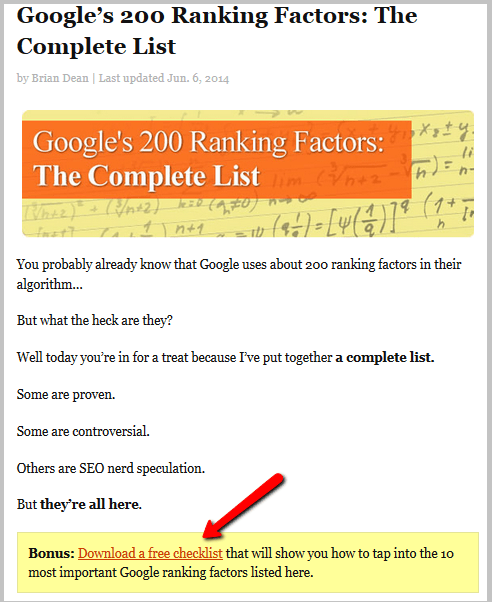
STEP 3: Emphasize your most important subtopics, quotes, features, etc.. using the yellow box feature.
16. STRATEGICALLY LINK TO YOUR INTERNAL CONTENT
As you write your initial or edit your final draft, knowing which relevant webpage you can internally link to your content is best. You can follow these simple steps if you’re a newbie blogger and want to be smart at internal linking.
STEP 1: Go to Search Console – Search Traffic – Analytics (if you haven’t connected your Google Search Console to your WordPress site yet, check out this guide).

STEP 2: Find pages with high impressions and CTR but are sitting in positions 11 to 20. This is to get these pages to improve their ranking by adding new internal links.
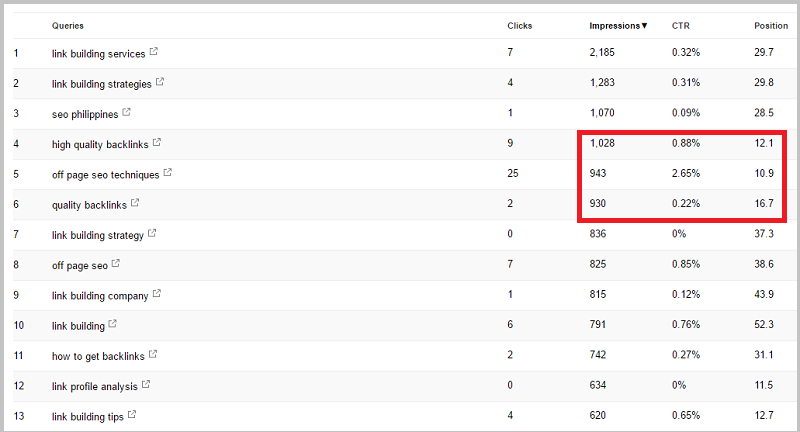
OPTIONAL: If you have thousands of pages, you can also do a Google search for site:yourdomain.com “your current topic” to find pages relevant to the content you are currently writing.
STEP 3: Link to your preferred thematically related pages from your content.
17. PUT SCHEDULES TO EACH WRITING PHASE
You’ll read most productivity articles about how to break down a huge project into small tasks. While this is very useful, something is missing here. Even if you break a huge project into smaller ones, you want to ensure you can commit to completing every small task.
The same goes for content writing. If you’ve got a huge content writing project, here’s what you can do to ensure you can publish your content on or before the deadline.
STEP 1: Break your huge content writing project into smaller tasks. For example, if you are targeting to write 5000 words in length type of content, then you can divide it into five smaller tasks (writing 1000 words at a time).
STEP 2: Set schedules to finish each small writing task. You can use free project management tools like Trello to make this possible.
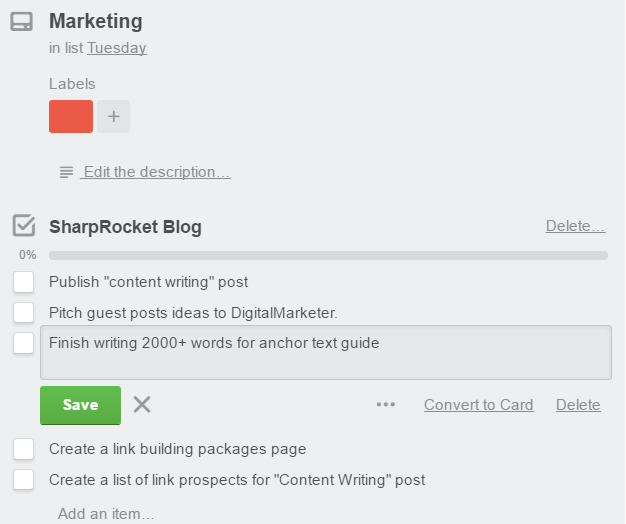
STEP 3: Don’t procrastinate. Achieve your goal daily by completing all small tasks.
18. USE MICRO SURVEY TOOLS TO GAIN VISITOR INSIGHTS
Customer insights play a vital role in content ideation. If you can identify what your customers want, it’ll be easy for you to create content that caters to their intent, specific to their levels in the buyers’ journey. One way to do that is to use a micro survey tool. Follow these steps.
STEP 1: Install Qeryz plugin in your WordPress account.

STEP 2: Gain insights using their platform. You can ask what type of SEO professional they are, then proceed to another question like what topics they’d like to read.

STEP 3: Create content based on your gathered insights – what content type and format they’d like to see published on your blog.
19. UNDERSTAND PROPER BLOG POST STRUCTURE
Structuring your latest article, like how you plan and build a house, is almost the same. To make a great foundation for your house, start by planning everything. Here’s how you can do it.
STEP 1: Create a list of topics, subtopics, and points you want to discuss in your article.
STEP 2: Bundle all topics together. Look at points that you can compile into one subtopic. Make sure you don’t overlap points in every subtopic you have.
STEP 3: Use this blog post structure from Zazzle Media to ensure the organization of your content.
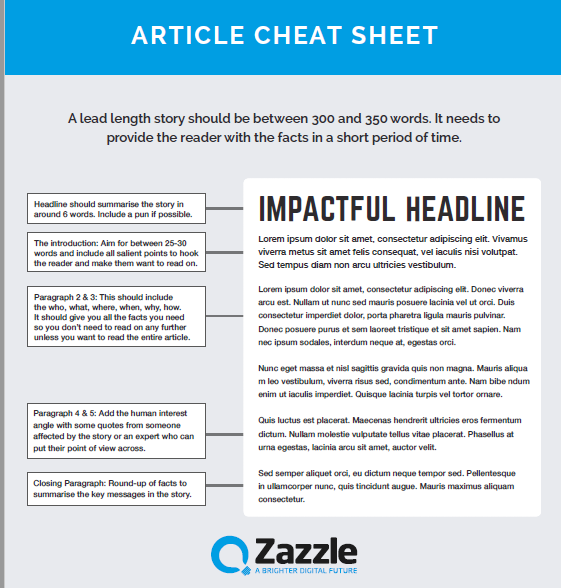
20. USE SUCCESS AND FAILURES AS YOUR CONTENT IDEA
Stories tell a lot. They’re actionable, real-life, and life-changing.
If you can share something that can teach valuable lessons from your experience within 1 year or so, use that as your next content idea.
Here is a sample from Matthew Woodward’s top blog post – How I Build a Top 100 Blog in 12 Months.
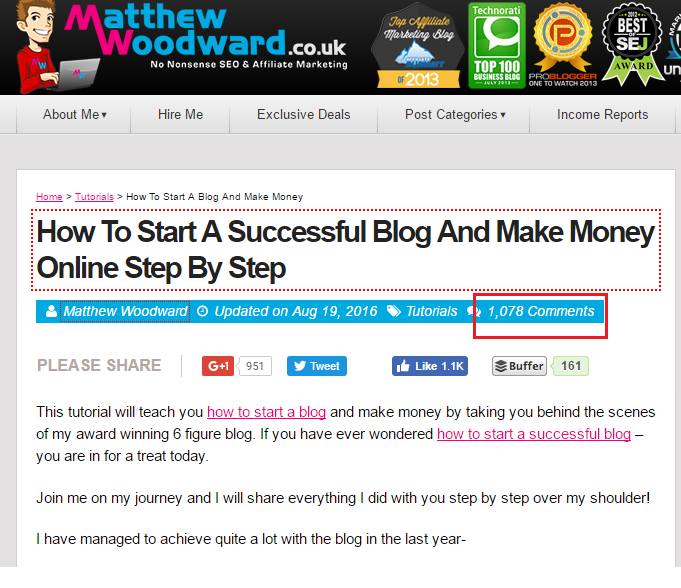
You can apply these tips to make your success and failures a great content asset.
TIP 1: If you have internal data like screenshots of month-to-month organic traffic or growth of email subscribers, include them in your content. This will increase the credibility of your page content.
TIP 2: Show results at the beginning of your post to build initial interest from your readers, especially those new to your blog.
TIP 3: Share how you accomplished your success by detailing steps to make it easy for readers to follow the process by themselves.
21. WRITE ABOUT INDUSTRY MISTAKES
In any industry, there are always mistakes to commit. For parents, it would be exchanging time at home with more work in the office. For search professionals, it would block important pages in your site’s robots.txt file. Whatever it is, there are always mistakes in your industry; you can use that as your content idea.
Start with doing a Google search for [your industry] “mistakes” or inurl:mistakes [your industry] or intitle:mistakes [your industry] to find blog pages and forums that cover that specific topic.
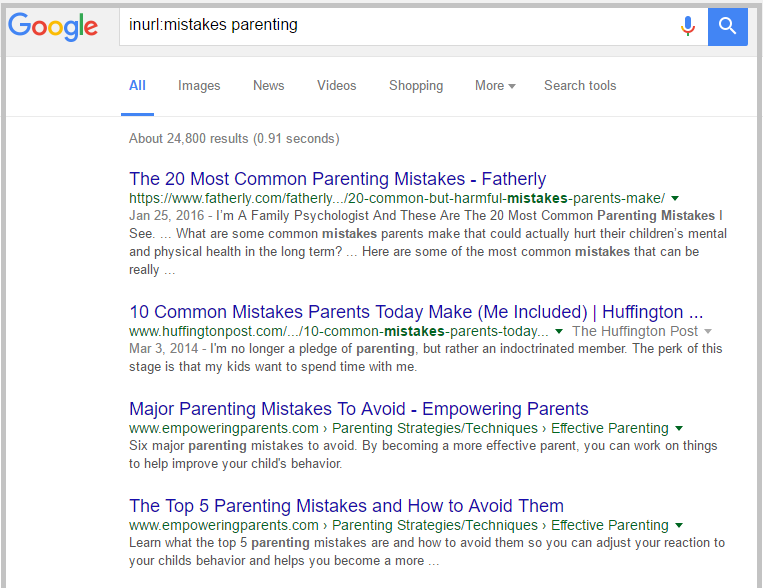
Note that in your content ideation or brainstorming tool, if it’s feasible for your writing team to discuss.
22. GET INSIGHTS FROM REDDIT AMA
Reddit is one of the top user-generated websites, where experts’ insights can be best seen on its Ask Me Anything (AMA) sections. Follow these steps to generate ideas for your content.
STEP 1: Go to Reddit and search for [topic] AMA; then, you’ll see a list of AMAs recently conducted by Reddit moderators.
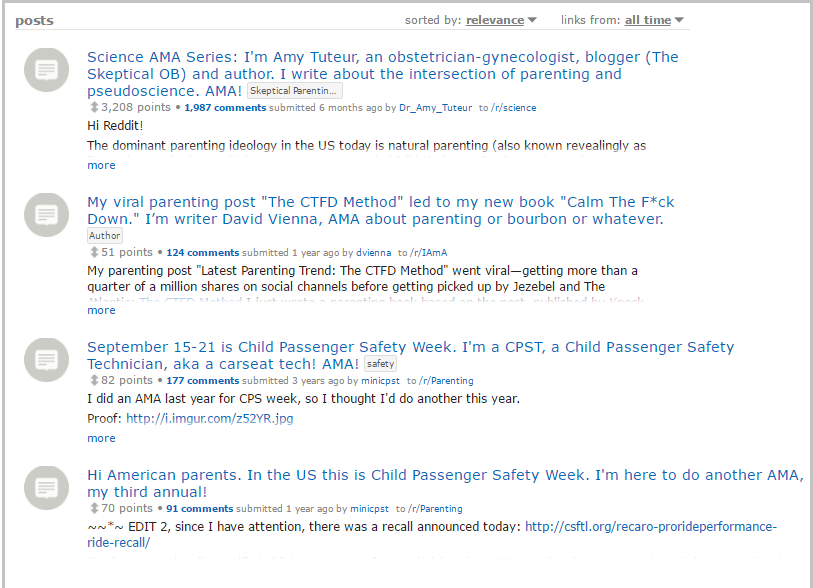
STEP 2: Find relevant Ask Me Anything threads and skim through each question and answer part. Consider using any insights or potential topics as your content ideas for blog posts.
23. SEE COMMENTS ON OTHER SITE’S CONTENT
I’m not talking about these examples of blog comments.
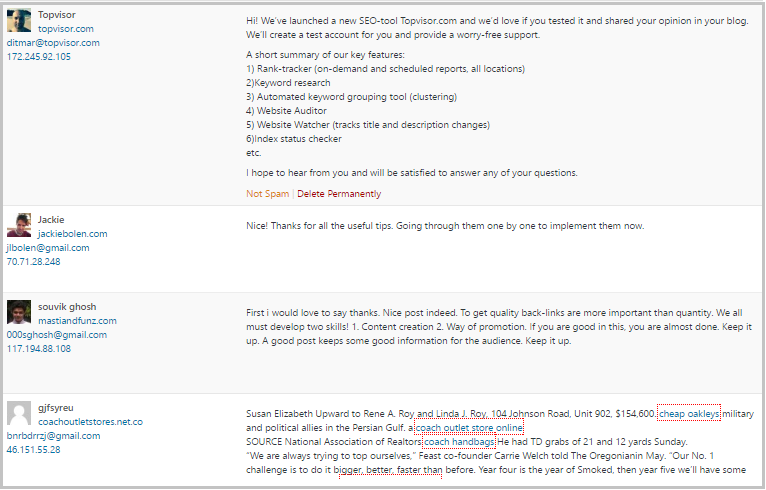
But many other valuable comments on other blogs’ content could potentially be your next content topic.
Let me give you an example. This Whiteboard Friday post by Michael King garnered a lot of comments in the SEO and link building community.
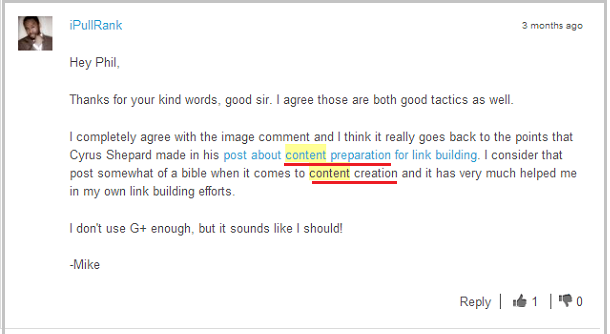
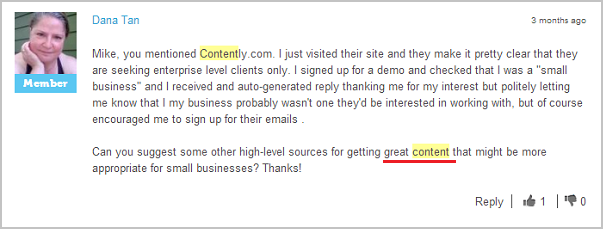
If you search for specific terms, you’ll notice some of the comments can be your potential topics for content (if you’re blogging about SEO).
Pro tip: Click the box saying, “Email me when new comments are posted,” right below the post of your target site. This will help you track if there is a new comment on the blog post. You’ll receive a WordPress email when someone comments on the post. Some blogs in your industry have this feature in their comments section, so take advantage of it.
24. SEEK INSIGHTS FROM EMAIL SUBSCRIBERS
An email newsletter is one of the most profitable sources of content ideation. Why? Given that your customers subscribe to your email list (assuming they intend to), you know they want to get more information from your brand.
Take a look at this email:
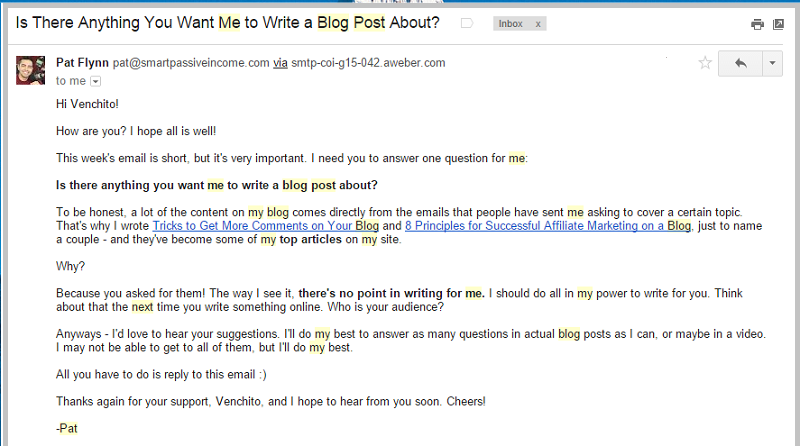
If you notice the question, it’s straightforward. “Is there anything you want me to write a blog post about?”
The next time you send emails to your subscribers, add a call-to-action at the end, asking them to give you their suggested topics to write about. If you’ve got a huge list of subs, it’s a guarantee you will get replies.
25. USE TWITTER LISTS FOR CONTENT UPDATES
One notable feature of Twitter that content marketers haven’t found worth using for their content ideation process is the Twitter list. If you can create your own Twitter list or find any public lists of influences you’ve been following for a long time, then that’s a goldmine of content topics you can take priority the most.
How to get started?
STEP 1: Check out each Twitter profile of your industry’s influencer(s) or experts. They may have one or two Twitter lists that are publicly available. For example, Ross Hudgens created his own Twitter list of content inspiration. Given that we’re in the same blogging area, I can subscribe.

STEP (optional): You can create your own Twitter list featuring all influencers, preferably bloggers in your niche. Take this image below as your example. It’s my own bucket of off-page SEO, content marketing, and internet marketing bloggers. Their regular tweets inspire most of the content here at SharpRocket and Digital Philippines.
STEP 2: Check out every link they are sharing on Twitter. This can consume a lot of time, so set it aside either late in the afternoon or evening. Use Evernote to list all links to every article they’ve shared. This allows you to organize all of these resources quickly.
26. CUT OUT UNWANTED FILTERED WORDS
As a writer and blogger, one big mistake I made in the past is trying to please my readers with flattering and unnecessary words. You can relate to this, right? When starting out in blogging, you’ll find yourself adding more words that shouldn’t be added, which makes your overall content crappy as you do it all the time.
Instead of saying very, very good, you can say excellent. Instead of saying Today, I will tell you about it, say I’ll tell you about it.
Making your content as straightforward and succinct as possible is important to engage your readers better. In your next writing time, filter your words by cutting out unwanted phrases.
27. FIND FAQS IN YOUR NICHE
Google provides results for frequently asked questions with quick answers, satisfying every online user who does every search query.
In essence, if you are making a habit as a content marketer of finding FAQs and servicing each valuable question with the right answers, you are producing new types of content that can drive direct traffic by ranking 0 in Google – if you happened to be caught as a top direct answer. Check out this example. I’m getting some good traffic by ranking for this query.
How to take advantage of this?
STEP 1: Use FAQFox to find commonly asked questions in your industry. Simply do searches for any relevant keywords in the search box.
STEP 2: Pick a category to start filtering questions targeted to your industry.
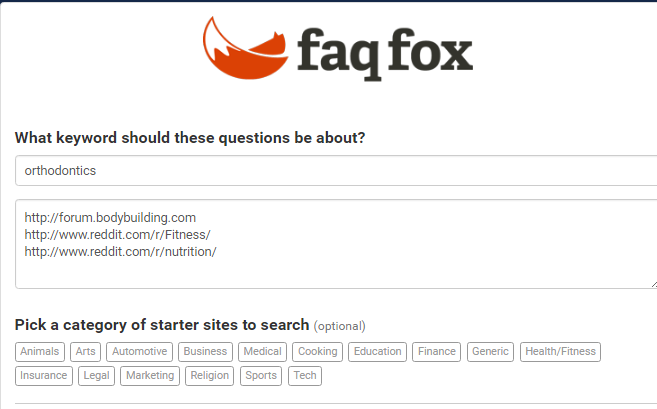
STEP 3: FAQFox will provide a list of commonly asked questions that are good considerations for your next content. Find any that will fit your blog categories and start answering them in your posts.
28. GET TRENDING TOPICS USING AHREFS
For advanced content marketers, it’s common to use Buzzsumo to find the most shared content on the web and of your competitors.
If you use Ahrefs as your primary SEO tool, maximize their content explorer features. It’s quite a recent feature that allows you to find top content with many social shares and referring linking domains.
How to maximize Ahrefs for content exploration?
STEP 1: Type in your head term or next keyword phrase in their search phrase. Choose in title in their options to only find blog posts with an exact head term in their titles.

STEP 2: Filter results based on your preferences, either all-time or a set time period, language, specific Social account share, or referring domains. Make sure to click one article per domain. Filter based on your needs.
STEP 3: Check each link in search results and identify new trending topics you can consider for content creation.
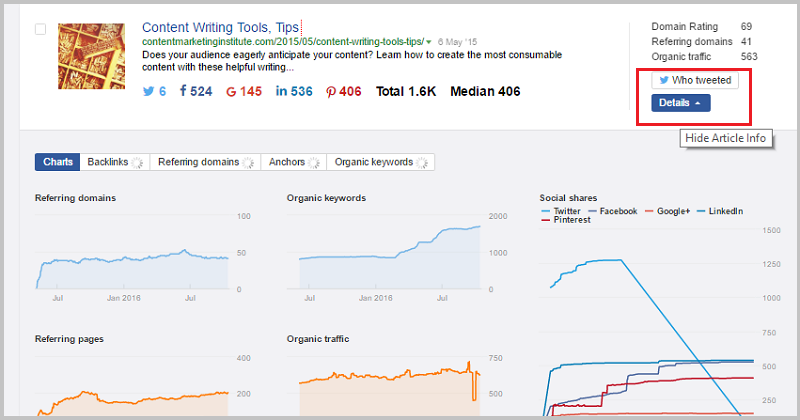
Pro tip: View each detail (click Details) for link growth (referring domains graph) and organic traffic. This allows you to see if a specific content topic is linkable in nature, as it tends to attract natural links over time.
29. FIND SIMILAR CONTENT THEMES
Analyzing your own data is helpful to get new insights as to which area of topics you should be investing your content creation in. What you can start doing now is to look at your Google Analytics account. Follow these steps to identify profitable content themes.
STEP 1: Go to Behavior – Site Content – Landing pages and set your duration period for one year or three years, depending on how long you started blogging.

STEP 2: Sort them by the number of visits and conversions to see which content asset performs well in terms of business value.
STEP 3: Find similar content themes by listing their topics in a spreadsheet and looking at patterns of content areas each is aligned to.
30. DO 6-3-5 BRAINSTORMING
If you’re having a hard time brainstorming with your team using your office’s whiteboard and pen, then you need some alternatives to use for that purpose alone.
If you’re part of an agency, each individual or content writer will have 6 rounds each to suggest any content idea for a project they’re working on (assuming it’s a collaborated content writing project).
Six people, six rounds at 5 minutes per round.
This allows each content writer to participate in the brainstorming session, not just one – the content manager who does everything.
If you’re part of a big agency or team, this tool might help you brainstorm content ideas effectively.
31. BE MORE PRODUCTIVE WITH COFFEE
Productivity matters in content writing. When you know what specific hours you can do the work more effectively, you’ll see much greater results in less time. One habit you can start now is drinking coffee if you’re allowed to do so.
Drinking coffee helps you become more productive at work, particularly in content writing, and helps you be more alert and creative by setting your mood.
In this article from Time.com, the author shared the best times to drink coffee – between 10 a.m. and noon and between 2 p.m. and 5 p.m. You can drink two or three cups of coffee within a day – it’s up to you, as long as it helps you do more content work.
32. USE HORIZONTAL THINKING FOR BRAINSTORMING
It is sad when you’re trying to come up with ideas for a client sitting in a boring or, as they say, less creative industry. Let’s say, for a plumbing niche. You can’t think of broader topics than toilets, installation, etc. You’ll move away from the general content theme even if you do.
As such, one way you can do this is to think horizontally – others say it is tangential thinking. Whatever it is, it is a process of looking at the sideways. Take a look at this example from Moz.
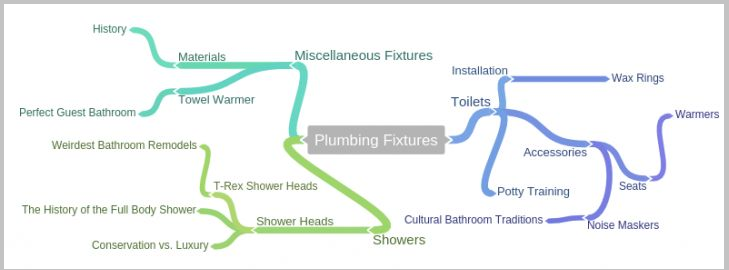
If you look at bathroom content ideas, you are only getting a small scope of audience. But if you can think laterally, consider other thematically-relevant ones like DIY and eco or environment-friendly concerns.
Did you get how this works now?
You can create a bubble chart to get started with it.
33. WRITE EXCERPTS FOR VIDEOS OR VISUAL PRESENTATIONS
Being resourceful should be every content marketer’s characteristic. Knowing what to prioritize with your list of content ideas and using what assets you already have can help you follow your content calendar – only producing high-quality content pieces.
One creative way you can do now is to collect all your existing videos, either produced internally or outside your organization. Once you have these internal content assets, choose pieces you think can be turned into blog posts. The key here is to identify if one particular video is something your existing readers/audience will care about.
Your next step is to write excerpts to be placed below the video content. You can hire someone from Upwork to do the work for you, or you can do it yourself.
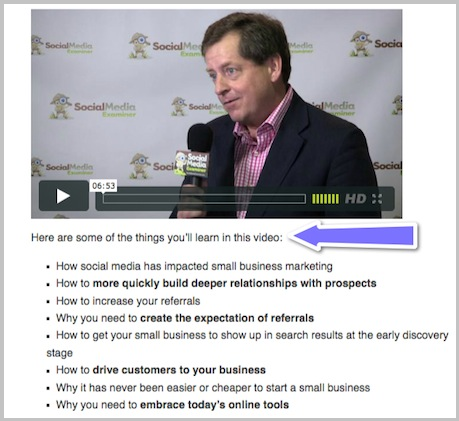
If you don’t know what content you should be producing next, start looking at your database, and see which videos you can translate into a blog post, with excerpts to preview details of the video.
34. ALIGN CONTENT TO BUSINESS GOALS
Setting business goals is essential to every business activity. You can’t put a specific KPI at your desk for your content writing or creation process without a goal first.
Now here are some quick tips to start defining business goals with your content writing process:
TIP 1: Be specific with your content creation goals. To be the best marketing agency is not a goal. It’s too broad, and there are a lot of factors before you can measure it. Below are some good examples of specific business goals.
GOAL: Rank on first pages in organic search for competitive link building terms.
SharpRocket is a newly established link building company. To be recognized as the best link building agency in the world, we need to rank highly for both commercial and informational keywords.
GOAL: Generate 200 inbound leads monthly with mid-level to large marketing budgets.
We must implement robust content creation and promotion campaigns to achieve that goal. We also want to ensure visitors from different traffic sources will convert into potential SEO clients.
These are just some of the goals that we have at SharpRocket. Knowing this will help our marketing and sales team set specific actions based on the goals set. From goal-setting, we can now set specific KPIs we need to achieve every month.
If you are an in-house content writer, it is best always to align what you write to your organization’s business goals in its digital marketing campaign. This way, you’ll be more motivated to provide the best quality content, given that you know where it’ll go.
35. CREATE YOUR AUDIENCE PROFILE OR PERSONA
When you strategize your content marketing campaign, you should never forget to create your own audience profile or persona.
It’s not rocket science. It’s very simple, and if you haven’t executed this yet for your website, you can follow these steps to get started.
STEP 1: Know your audience and be very specific with this. For example, our company targets three types of companies: SEO agencies, SEO, and digital marketing teams of big corporations and medium-sized businesses. We can create the following audience profiles using this as our starting point.

STEP 2: The next step is to know where these audiences spend most of their time online. This includes identifying what type of blog they frequently read or which forums they participate in. This isn’t just useful for content creation, but in massively promoting content to web places these audiences are familiar with.
STEP 3: The last but crucial part of creating your audience profile is to think of how you can add value to each of them. Each person has their own needs that your content should be able to address.
As you write your next content, don’t just write everything. Identify to whom your content is targeted so that you can get more results from your work based on the value provided by your content.
36. USE BLANK PAPER FLOW STATE
Writer’s block is common in content marketers, especially for newbie bloggers–though at some point, you can avoid it and make sure it’ll not happen to you all the time.
If you’re struggling with writing your introduction, take these simple steps.
STEP 1: Install Flowstate. This app allows you to write your thoughts continuously. The app deletes your work if you’ve been stuck or stopped writing for more than 5 seconds.
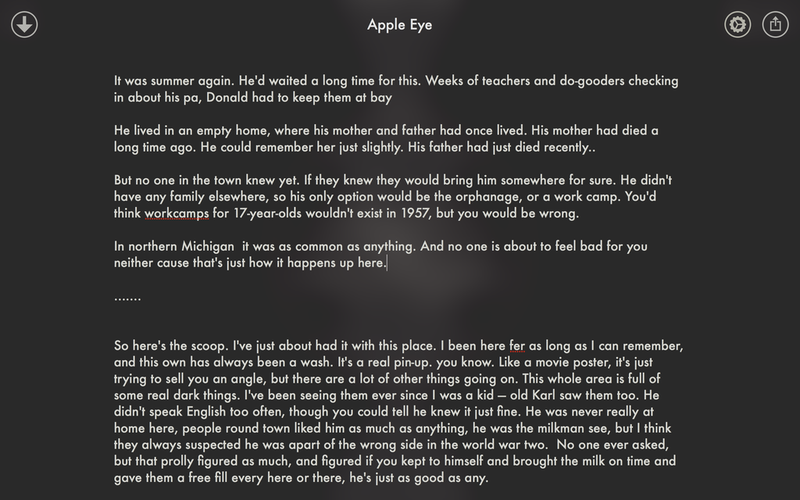
STEP 2: When you finish each part or section of your content, i.e. your introduction, copy and paste it into your Word document.
STEP 3: Use the app whenever you can’t write your first paragraph. This is a handy technique every content writer should consider.
37. MATCH HEADLINES WITH META TITLES
When people land on your page from Google search results, the first thing to consider is whether they’ll keep reading or not when they’ve found what they are looking for – user satisfaction.
I’ve seen this mistake most of the time. Bloggers tend to mislead their readers by mismatching headlines with meta titles. They’ll write the most clickbait meta-titles when their headlines and content don’t match their SERPs structure.
Don’t let this happen to your content writing campaign, as you’ll lose most of the new visitors you have on your website by misleading them with wrong information and not satisfying their intent, desires, and questions.
38. PREPARE EDITORIAL CALENDAR
As I always say in my blog posts, an organization is key to an effective content creation campaign. If you don’t take time to organize everything, you’ll miss out on some important details and make more mistakes at work.
Preparing an editorial calendar for your content marketing campaigns helps you to schedule and organize topics with deadlines attached to them. This helps you become more accountable for what you do.
Below is a sample of the editorial calendar template from Michele Linn, and you can download it here.
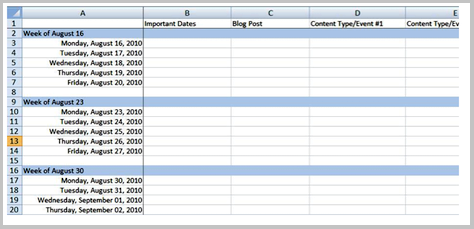
In her template, he tracks every blog post’s information, such as post date, author, keywords, categories, tags, call-to-action, and status. It’s not near perfection, but the template can help you start with content execution.
39. KNOW ABOUT BLOGGING MOJO
Blogging mojo is a coined term by Darren Rowse that refers to a blogger’s motivation to produce high-quality content consistently. Consistent means, depending on the blogger’s writing frequency, not just once every year but once or twice weekly.
There are many ways to get your blogging mojo back, especially if you’re being burnout by too much content work. Here are some that are most effective for us:
- Align your blogging style to your business goals. You wouldn’t worry if you’re producing quality content when you start to remind yourself about why you do it – and mostly, it boils down to providing value to your business or someone’s business – if you’re hired to write for them.
- Say the same things differently. Bloggers often stop writing because they think they always blog about the same topic. More often than not, they don’t know to find angles. You can blog about the same topic but attack its discussion differently.
- Get help from other people. If you can’t find a good blog post today, ask your email subscribers, mentors, or offline friends. You wouldn’t realize they have something to contribute to your content ideation.
40. FINISH BIG ROCKS FIRST
Top CEOs and business leaders start their day early in the morning, on average 6:30 A.M. Before distractions come, they’ll start doing the most important tasks of the day to get big wins even before the afternoon starts.
It’s interesting because content writers and bloggers might find themselves to be productive early in the morning. Depending on your work schedules, if you can try to get up early and finish the “big rocks” – your content tasks, you’ll be more efficient and effective with your content creation process.
Jeff Bullas, a popular blogger, spends his first five hours (4:30 am to 9 am) only on content writing. By finishing this big rock early in the morning, he can get most of his day growing his blog and acquiring more business value.
41. USE DOTS TO CREATE SUSPENSE
Engagement matters in content writing. If you can’t connect to your readers until the end, you’ll lose their interest at one point – leading to less time-on-page.
One technique you can employ in your regular blogging is the “dotting” technique. I always see this in Brian Dean’s Backlinko, where he uses this technique throughout his blog posts.


The dots create curiosity, keeping visitors reading until they reach the end of the content. Such a technique is much more useful for long-form content.
You can try the “dotting technique to your own blogging style and see for yourself the results of it (check your time-on-page data in Google Analytics).
42. THINK EVERGREEN
Content has lifetime value. Its lifetime value depends on how long its information provides value to its target audience.
Take a look at this, this blog post of mine in 2014 has been well-received by the content marketing and blogging community. It continuously gets new backlinks over time since more and more content marketers, especially those looking for additional references and resources, find it very useful to include in their latest blog posts.

If posts need continuous updates and changes in their context, invest in their update or revision to grow their organic traffic and build more audience around them.
43. LEVERAGE BUCKET BRIGADES
If you’ve started with SEO copywriting, I recommend you read this guide from Brian Dean. It compiles actionable copywriting techniques to help you effectively engage your readers – making them stay in your content from beginning to end.
One copywriting tactic that Brian Dean shared is the use of “bucket brigades”.
Bucket brigades or grease-slide words (its other referred phrase) are words and phrases that create a smooth flow of transitions between paragraphs and sentences. They minimize the friction of readers leaving the page and let them read the content like a greased slide.
If you’ve been an avid reader of link building blog, you’ll probably notice some of my posts have bucket brigades. Here are some examples.
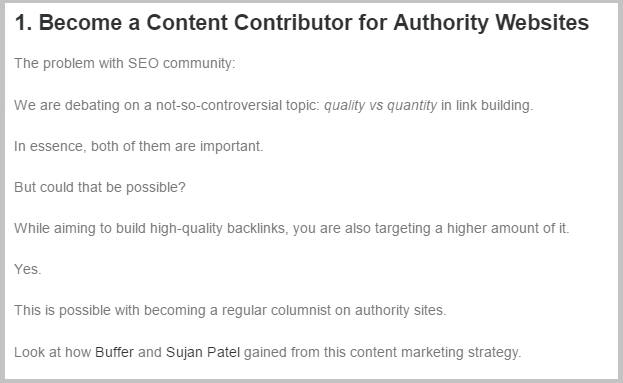
You can add a few bucket brigades to your post (full list here).
The next time you write the draft of your content, try adding bucket brigades to make your readers stick to it.
44. USE PROPER FORMATTING
One overlooked factor when writing content is proper formatting. I always see this – plain content without tables, bullets, numbers, yellow boxes, etc.
There are simple and most common formatting options you can try to include in your content, such as:
- larger font sizes for quotes and headings
- underlined text for emphasis
- bullets for unordered lists
- numbers for steps to follow or lists ordered by importance
- indented paragraphs for quotes or testimonials
45. SEARCH BAR AGAIN THE SECOND TIME
Google autosuggest helps content marketers find new long-tail keywords that aren’t easily discovered using keyword research tools.
The first suggested search keywords are different from the second try.
Instead of just sticking your content ideation process with the first try suggested search phrase, try searching for Google suggested phrases the second time.
46. DON’T FORGET ABOUT GOOGLE-RELATED SEARCHES
If you are a newbie in the content marketing and SEO industry, you probably are unfamiliar with other keyword research tricks besides using the Google Keyword Planner.
Google provides suggested related searches connected to your current search query at the bottom of the search results page (SERPs).
This allows you to find other related long-tail keywords to include in your content to help Google perceive it as desirable to rank for other thematically-related phrases.
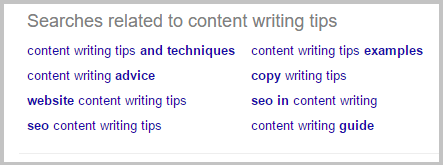
47. TRY ASTERISKS WILD CARD
If you are creating content in industries with things of different kinds and classes, like food recipes, you can take this search technique: asterisks wild card to find almost all types of things you’re trying to rank for.
Here’s one example.
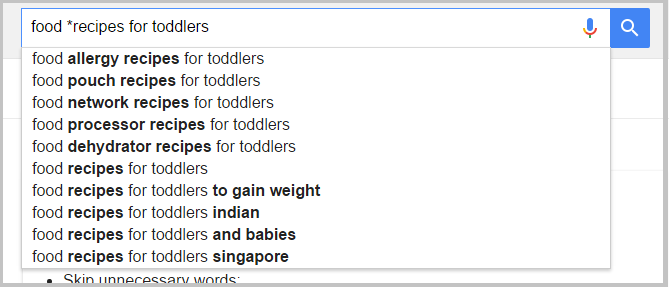
48. FIND PRODUCT ALTERNATIVES WITH VS TECHNIQUE
Decision-oriented online searchers are interested in finding products or services in an industry that will best fit their needs. Because they’re still in the decision stage, they’re looking for as many alternatives to products they’re already familiar with to assess each product or service’s features and benefits. This way, they can make better buying decisions.
A Google query for product VS can reveal other brands (competitors and industry blogs) producing content on that same type – comparison type of content.
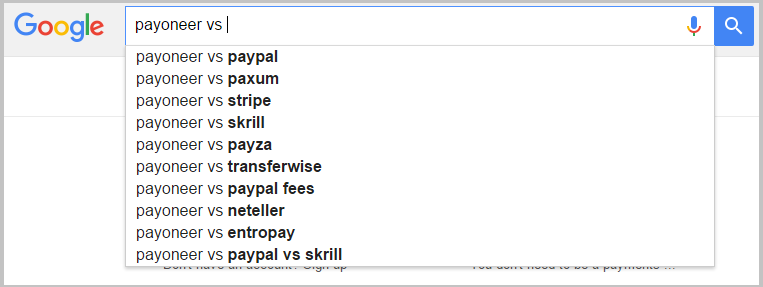
49. GET CREDIBLE SOURCES WITH FILETYPE
If you are creating robust content assets, you always have to consider the credibility of sources from which you’re getting information and data.
One way to easily find credible sources from experts, influencers, and popular brands that have secured significant case and research studies is by using the filetype:pdf research method in Google.
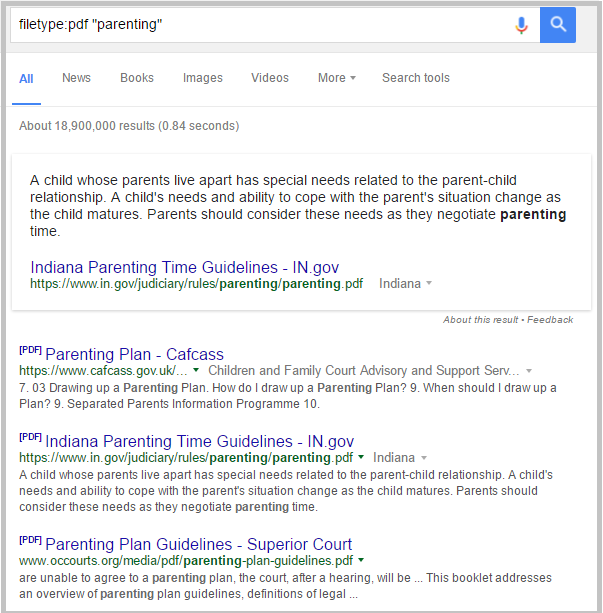
50. GAUGE TOPICS BASED ON THE COMMENTS COUNT
Typical reverse engineering has this process: find top industry blogs, plug into top link building or content tools like Buzzsumo or Ahrefs, then find which posts get tons of shares and links.
Glen Allsopp upgraded that approach by looking at the number of comments each post received as a basis for considering the topics’ high-interest rate compared to just focusing on social shares and links.
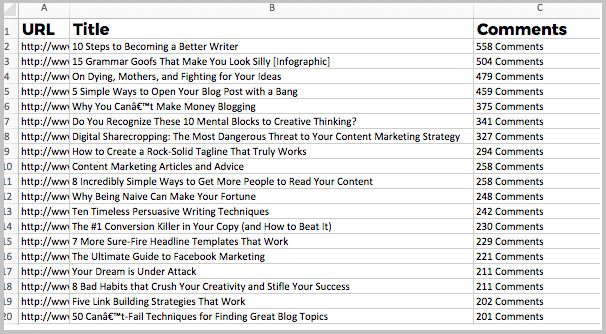
51. GET NEW INDUSTRY INSIGHTS FROM SLIDESHARE
Influencers are usually speakers in their own local communities or countries. If they have their own blogs, you’ll find them uploading their slide presentations to Slideshare and re-publishing them on their websites.
Slide presentations of influencers are top content ideation inspirations; you can take advantage by monitoring their latest speaking updates using Twitter lists or even finding the latest events in your industry. Do a Google search for [industry] seminar/conference/event [current year] so it can provide you with upcoming events as well as recaps of bloggers on a recent niche event.
52. USE CONTENT GAP ANALYSIS
I’ve been testing a scalable content ideation strategy that will get results for our clients, and this makes my top list – content gap analysis. Here’s how to start implementing this in your content marketing campaign.
STEP 1: Identify your content competitors – ones you are trying to compete for informational keywords.
STEP 2: Plug the URLs of their domains into Ahrefs together with the URL of your website.
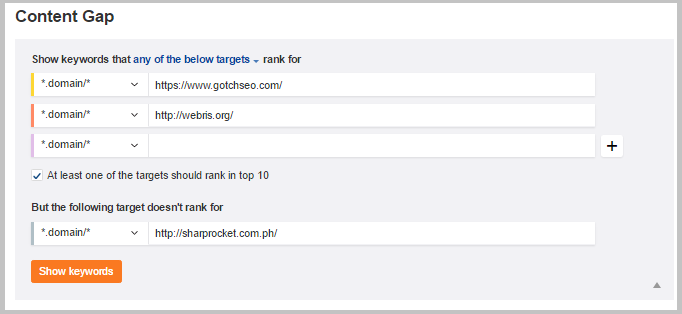
STEP 3: Export results to a CSV file, spreadsheet, or Google Docs sheet. The end result should be like this (image below). Check which keyword you can create content about with high potential to outrank your competitors.
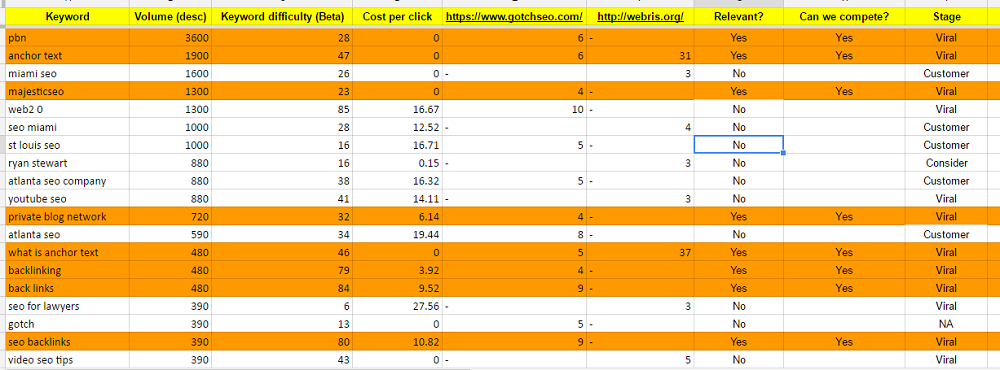
53. RESEARCH NICHE TWITTER CHATS
You will find different industry trends on Twitter alone if you are a social media enthusiast. There are hashtags plus keywords picked up by top news sites and blogs that always update their posts.
Niche Twitter chats are a content ideation source you should consider today if you’re a content writer or marketer.
These trending hashtags don’t just show up without any reason. So if you’re having a content brainstorming block in your head, try searching for industry on Twitter.
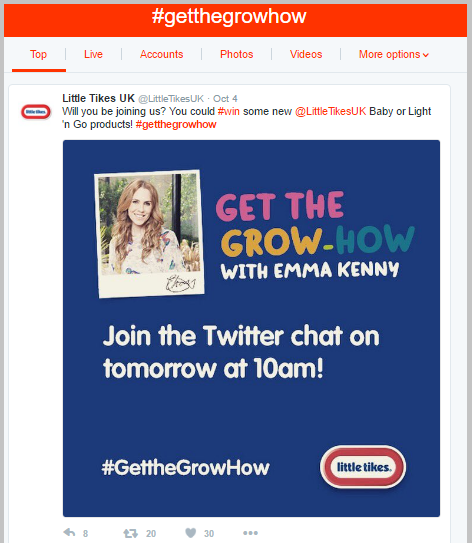
54. FIND TOP QUESTIONS ON QUORA
I’ve received many leads from Quora (see sample client inquiries below).

But aside from lead generation purposes, this top community website is also useful in generating topic ideas for well-perceived ideas.
What you can do is search for topical trends in Quora and list them down in a spreadsheet. Here is a screenshot of what I do. Though this is for content promotion, it’s one great start for content ideation. If you’re doing content promotion, ensure you know how to find email addresses of your outreach targets.
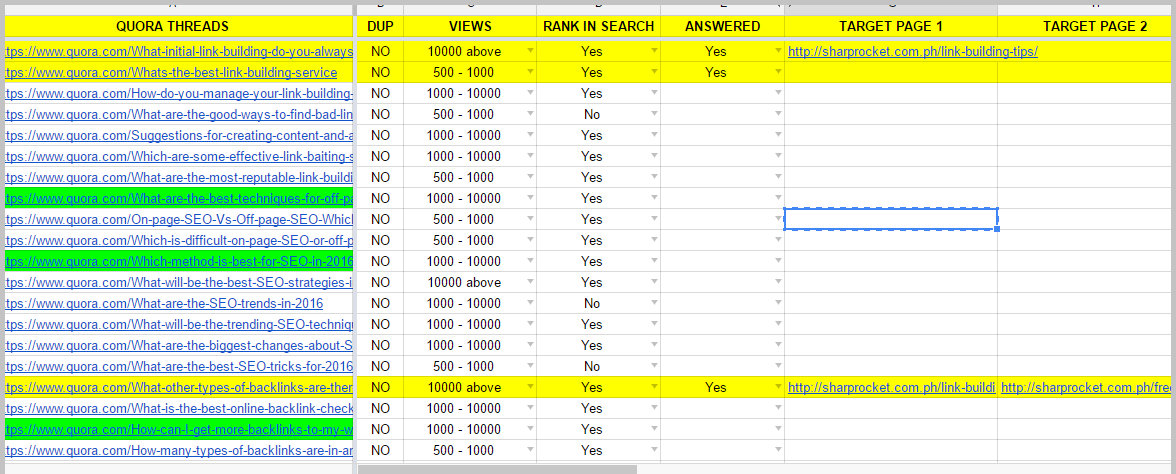
You can base your picking of topics on two things: first, rank in search – search the exact question on Google and see if they rank on the first page. The best should be on top spots 1 to 5. Second, if they are in a range of 10,000+ views or 1,000 to 10,000 views – this means that these threads are visited most of the time by community members and get pageviews from organic sources (from search).
Now It’s Your Turn…
What other content writing tips can you share?
Or maybe you have a question about implementing any of the strategies and techniques in our above list?
Either way, leave a comment quickly below.
I’ll be more than happy to reply to comments and answer questions.
So if you have a question, insight, or new tactic, leave a comment right now.
How to Improve Content Writing Skills FAQs
How can I improve as a content writer?
To improve as a content writer, you can follow these 7 easy tips:
- Research your topic thoroughly.
- Use a clear and concise writing style.
- Create engaging and relevant content.
- Proofread and edit your work carefully.
- Incorporate keywords naturally.
- Use headings and subheadings to organize your content.
- Write regularly to practice and refine your skills.
Implementing these tips can enhance your content writing abilities and produce high-quality work.
How can I practice content writing?
To practice content writing, try these 6 top exercises, which are guaranteed to improve your skills:
- Embrace writing prompts
- Create a blog,
- Analyze and learn from successful content
- Experiment with different styles
- Collaborate with others
- Practice regularly.
These exercises will help you develop your writing abilities and become a better content writer.
What is content writing basics?
Content writing basics encompass creating, editing, and publishing digital content, such as blog posts, videos, ebooks, and social media copy. Professionals can effectively engage and educate their target audience by understanding the fundamental principles and techniques of content writing.
How do I train myself as a content writer?
To improve as a content writer, it’s crucial to train yourself. Develop your skills by reading widely, studying grammar rules, and practicing writing regularly. Take courses or join writing communities for support and feedback. Additionally, stay updated on industry trends and learn from successful writers. Investing time and effort into honing your craft will help you become a better content writer.
How do I start freelance content writing?
To start freelance content writing, first, build a portfolio showcasing your writing skills and expertise. Next, create profiles on freelancing platforms and start bidding on relevant projects. Additionally, network with other freelancers and industry professionals to find potential clients. Finally, continuously enhance your skills and stay updated with industry trends for better opportunities.
Is content writing a tough job?
Content writing can be challenging, especially when searching for fresh topics that engage niche audiences or cover advanced subjects. As a content writer, you may face difficulty generating interesting ideas or deciding on new angles. However, organizing research and brainstorming sessions can help overcome these challenges and create compelling content.
The Author
Venchito Tampon Jr
Venchito Tampon is a Filipino Motivational Speaker, Corporate Trainer, and a Leadership Speaker in the Philippines. He is the CEO and Co-Founder of SharpRocket, a link building agency. With a decade of experience, Venchito has a proven track record of leading hundreds of successful SEO (link builidng) campaigns across competitive industries like finance, B2B, legal, and SaaS. His expert advice as a link building expert has been featured in renowned publications such as Semrush, Ahrefs, Huffington Post and Forbes. He is also an international SEO spoken and has delivered talks in SEO Zraz, Asia Pacific Affiliate Summit in Singapore, and Search Marketing Summit in Sydney, Australia. Check out his other businesses, Hills & Valleys Cafe, Blend N Sips and Saas Pursuit.
How our LINK BUILDING AGENCY builds 250 links/mo consistently using Predictable Link Building Methodology™…
- Using a SIMPLE and PROVEN system
- Using a SCALABLE strategy
- No private blog networks
- No creepy outreach emails
